第12章
Now there are four modes of flexion if we take the combinations in pairs.Fore and hind may bend either both backwards, as the figures marked A, or in the opposite way both forwards, as in B, or in converse ways and not in the same direction, as in C where the fore bend forwards and the hind bend backwards, or as in D, the opposite way to C, where the convexities are turned towards one another and the concavities outwards.Now no biped or quadruped bends his limbs like the figures A or B, but the quadrupeds like C, and like D only the elephant among quadrupeds and man if you consider his arms as well as his legs.For he bends his arms concavely and his legs convexly.
In man, too, the flexions of the limbs are always alternately opposite, for example the elbow bends back, but the wrist of the hand forwards, and again the shoulder forwards.In like fashion, too, in the case of the legs, the hip backwards, the knee forwards, the ankle in the opposite way backwards.And plainly the lower limbs are opposed in this respect to the upper, because the first joints are opposites, the shoulder bending forwards, the hip backwards; wherefore also the ankle bends backwards, and the wrist of the hand forwards.